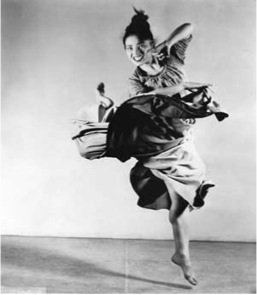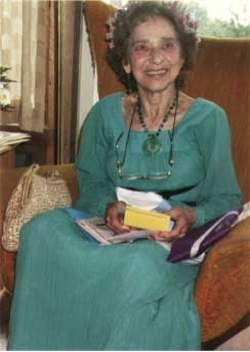
Eve Gentry, 1909-1994
Eve Gentry (1909 – 1994), was a dancer, choreographer and teacher who studied and worked with Joseph Pilates for 22 years. In 1968 she moved to Santa Fe, NM where, with Joe and Clara’s blessing, she opened a Pilates studio. I became a student of Eve’s in 1970. In 1982 I began her teacher training course. I taught at her studio until 1991 when she retired. I continued learning from her during those 9 years and to this day use her movement approach in my own teaching.
The goal of Imprinting is to produce this very small movement of the vertebrae along the length of the spine.
Eve was an extraordinary teacher, my friend and my mentor. As she aged her teaching gift grew into an ability to help badly injured and ill students. Eve’s Imprinting began as a way to help these students release the spasm in their low backs, reduce their pain and regain their movement efficiency.
There seems to be confusion around the meaning of Imprinting as used by Eve in the Pilates Method. Eve’s definition of Imprinting: A movement of the individual vertebra in relation to one another. This movement can occur in a variety of planes.

Eve Gentry
Eve began by teaching the clients to Imprint or drop the vertebra one by one into the mat while lying supine. The vertebra returned to “normal” after this dropping. The vertebrae were never forced into the mat with the use of the abdominals. She wanted you to use your back muscles for this action. The effect of this movement was a releasing ofthe tension in the low back and a lessening of pain. This “releasing” then allowed the spine to rest on or nearer the reformer during footwork without the client tucking their pelvis and interfering with the action of the hip socket.
Beginning clients who could not move individual vertebra were taught to imprint section by section (three or more vertebrae at a time). The goal of imprinting is to produce this very small movement of the vertebrae along the length of the spine – from the bottom to the top and back to the bottom again. Thus, Imprinting becomes a mobilization and awareness exercise. A client should never imprint the whole spine and then keep it down on the mat.
Side lying Imprinting is a lateral movement in the lumbar or thoracic spine, and should not be attempted or taught in the cervical spine. This is an excellent exercise for scoliosis and for stabilizing in side lying exercises.
Building Blocks is an Imprinting exercise done while seated. This Imprinting exercise is an action of stacking one vertebra on top of the next in order to support the torso in proper (lordosis/kyphosis) alignment while sitting or standing. Again, the emphasis was on the use of the deep spinal muscles to achieve this lifting action.
Eventually, Imprinting grew to be referred to as Articulation. On the inhalation, one would lift lift the vertebrae, and on the exhalation, one would Imprint or drop the vertebrae and then relax.
Because Imprinting creates awareness and support along the spine it may be used as a stabilizing movement. This small movement of the vertebra can balance a movement of the legs and arms. This then creates a more efficient movement pattern, using only the effort needed for the movement. For example, when supine, if you imprint L1, T12 while bringing your knees to your chest you greatly enhance the efficiency of the movement.
Eve used to say that one should use the muscles of the spine to support the spine. Imprinting /Articulation was her way of teaching that awareness and movement potential.
This article presents a simple overview re: Imprinting, written by Michele Larsson of Core Dynamics Pilates.
There is no bad movement, only movement badly done.
Eve Gentry

Comments are closed.